When discussing the most expensive and royal food in the world, one name that comes to mind is caviar. The “Law of Scania,” an ancient law from the Netherlands, reserved sturgeon fish – from which caviar is produced – exclusively for the royal family in 1202. In 1280, the Russian Orthodox Church even sanctioned the eating of caviar during religious fasting. The British royal family also declared the sturgeon a royal fish in 1324, and to this day, all sturgeon found in the waters of England and Wales are considered the property of the King or Queen. Historically, sturgeon was used to be eaten by common fishermen and domestic animals but gradually became reserved for royalty. The dish eventually began appearing on Europe’s elite tables, and as a result, its cost rose. Prices for caviar can range from $1,600 to $35,000 per kg, depending on the type and quality. But what is caviar, and why is it so expensive?
Overview of Caviar
In the 4th century BC, the Greek scholar Aristotle described a dish made from fish roe, which is similar to modern-day caviar. In his description, present-day Turkey and Iran, adjacent to the Black Sea and Caspian Sea, are said to be the source of the food. Caviar is believed to come from the Turkish word khavyar. Also, the Persian tribe Khedives used to called caviar as Cahv-Jar. On the other hand, Russian fishermen have been consuming sturgeon caviar since the 4th century BC or earlier. In fact, due to its price, caviar is now consumed only by rich people, once upon a time the common people of Russia were the main consumers of this food. Caviar’s current royal status dates back to the 13th and 14th centuries due to Scandinavian law, Russian Tsars, and the British Monarchy reserving sturgeon fish for the royal family. But the question may be what is the relationship between caviar and sturgeon fish?

Although caviar is basically unfertilized fish eggs, not all fish eggs are called caviar. Caviar refers to a delicacy made mainly from the eggs of “sturgeon” fish. Basically, sturgeon fish is only found in North America, Europe, and Asia, especially the Caspian and Black seas, from whose un-fertilized eggs the only real caviar is prepared. Despite the fact that caviar can be made from the eggs of several other fish, including salmon, herring, and lumpfish, they are not true caviar, they are “Caviar substitutes”. The Sturgeon fish species is one of the oldest surviving prehistoric species on Earth. This fish has survived on Earth for about 25 million years and is thought to be an animal older than the dinosaurs of the “T-Rex” species. As a result, this fish is also known as a living fossil. Although caviar can be produced from 7 species of sturgeon fish, only four species are currently used: “Beluga, Sevruga, Starlet, and Osetra”.
Caviar is considered to be the most expensive food item in the world. According to the Guinness Book of World Records, one kilogram of Almas Caviar made from the eggs of the Iranian Beluga Albino sturgeon fish, known as black gold, was sold for $34,500. In addition, one kilogram of Huso Huso beluga caviar sells for $24000. Meanwhile, an entire Japanese wagyu cow can be purchased for $30,000. In addition to the Beluga, Sevruga caviar is about $4,000 (3,938) per kg, and Osetra caviar costs up to about $3000 (2,930). In addition, the caviar of the relatively small species of American hackleback sturgeon sells for more than $1500 (1,551), which is the most affordable option among real caviar. On the other hand, as an alternative to caviar, American paddlefish, rainbow trot, and salmon caviar costs approximately $1,100 (1,098), $575, and $185 per kg, respectively.
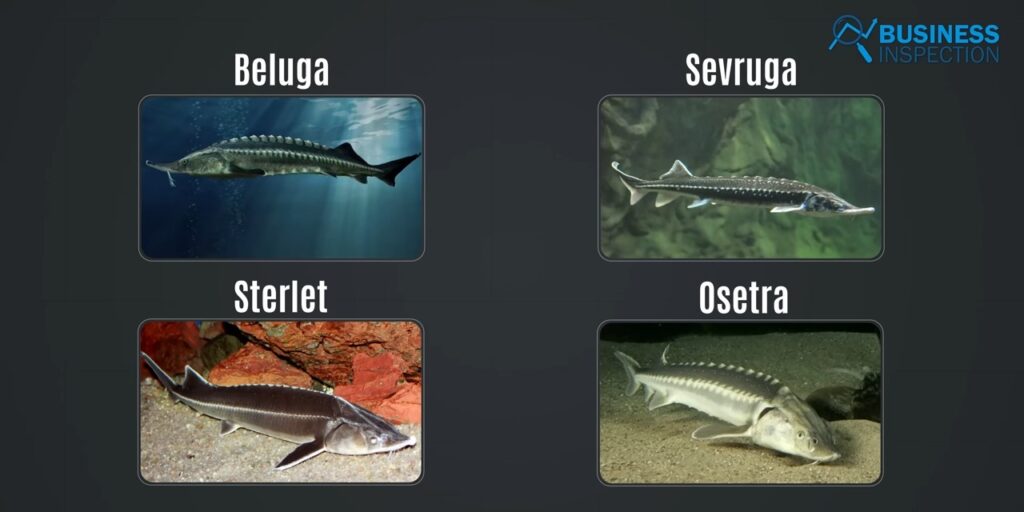
In 2021, the global caviar market size was $587 million, of which 33% was from the Asia-Pacific region, and 25% was generated from North America and Europe combined. In the same year, China exported nearly 64 (63.9) billion dollars worth of caviar, taking the top position, followed by Italy (26.9) and France (21.8) in second and third place. On the import side, America imported almost 40 (39.6) billion dollars worth of caviar, whereas Germany (20.9) and France (21.8) were the second and third largest importers.
Why Caviar Expensive?
Scarcity
According to the scarcity value thesis, the scarcity of a good increases its value. In the 17th and 18th centuries, Russian tsars began exporting caviar to Europe, especially France, which was the center of industrial culture at that time. This resulted in caviar being moved from royal tables to the tables of Europes elite. Due to the increasing demand in Europe, caviar prices in Russia rose to the point where they were unaffordable to many. As steam engines and railways invented in the 18th and 19th centuries, caviar reached the tables of the american elite beyond Europe. As a result, American entrepreneurs continue to overfish the atlantic sturgeon and currently, 85 percent of the sturgeon family is endangered. The International Union for Conservation of Nature lists 18 fish species out of 27 species of the Acipenseridae family as endangered, with the sturgeon listed as more endangered than any other species. According to a WWF report, sturgeon numbers have declined by more than 70 percent in the world’s basins over the past century. Currently, wild sturgeon fishing is prohibited in America, and even the importation of wild sturgeon fish and caviar from any part of the world is completely prohibited. In fact, countries around the world where caviar is imported are strictly monitored by government agencies to ensure that imported caviar is derived from wild sturgeon. Because of this, caviar production by hunting wild sturgeon is almost non-existent and farming this fish is time-consuming and requires a lot of investment. As a result, an artificial scarcity has been created around caviar, which is one of the main reasons for its expansion.
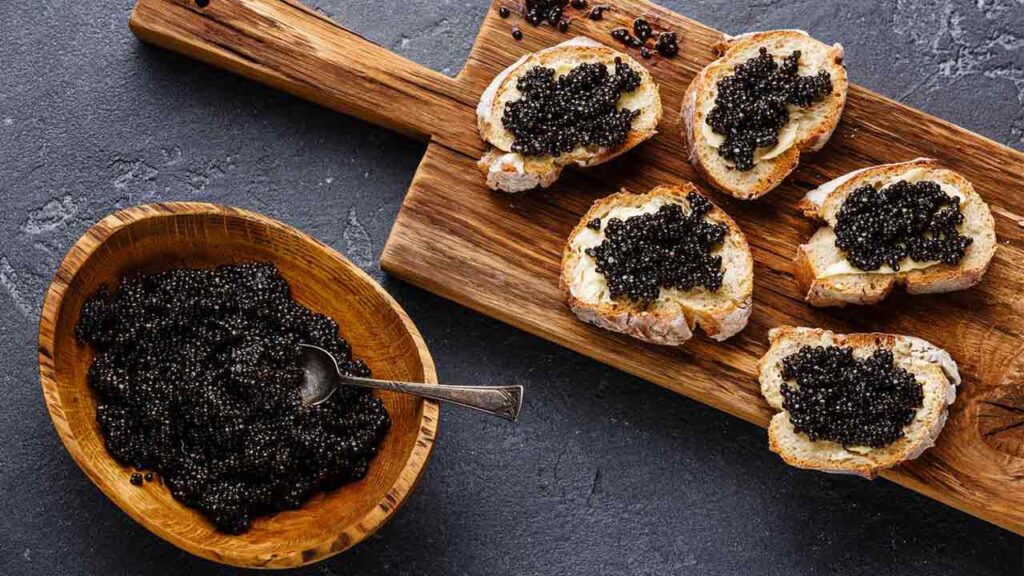
Cultivation
Caviar is also expensive because caviar is produced by getting female sturgeons to spawning maturity and harvesting the eggs, both of which are time-consuming. It takes a sturgeon years to reach egg-releasing maturity, whereas most animals on Earth reach it within weeks or months. A female sturgeon can produce millions of eggs at once, but it takes her between 8 and 20 years to reach maturity, depending on the species. The process of identifying the gender of fish takes at least 6-7 years. It is therefore necessary to have four different types of reservoirs when farming sturgeons. In the first tank, all the fish grow together at 15 degrees Celsius. An experienced marine biologist monitors the fish at regular intervals, based on their age. There is no set age when a sturgeon fish reaches puberty. It is quite expensive to conduct such regular scanning. As soon as the fish’s gender is revealed, it is transferred to either a male or female tank. Upon reaching sexual maturity, the fish are transferred to another tank for breeding. In all four types of tanks, fresh water and oxygen must be regularly supplied, and the water temperature must be maintained. In order to keep the fish alive, you need to invest quite a bit of money in farming the fish for 8 to 10 years without getting any income.
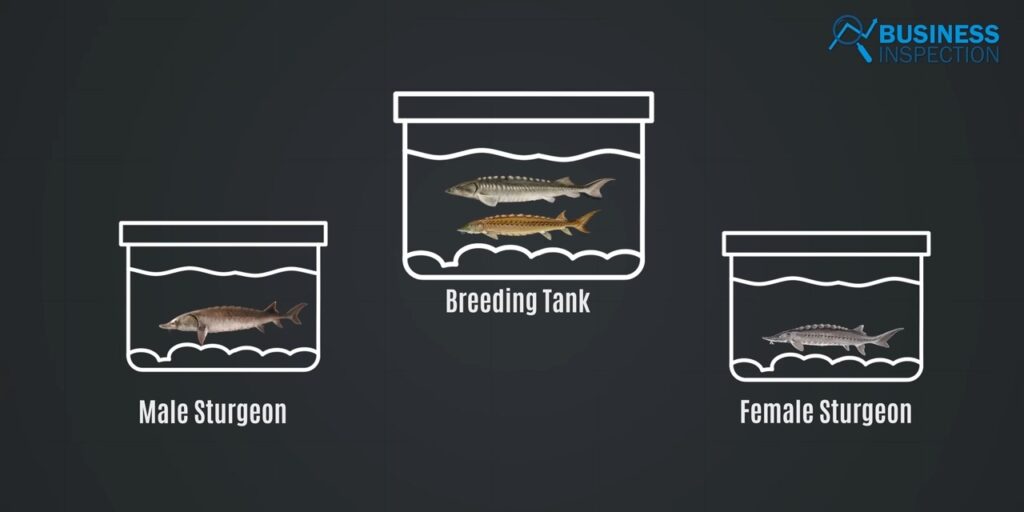
Harvesting
Egg collection from sturgeon fish generally involves two processes. Since ancient times, wild sturgeon eggs have been extracted by cutting open their stomachs. However, farmers began to use the no-kill harvesting method since collecting eggs only once after year after year of farming was not economically feasible. In this method, the fish are forced to release eggs using hormones. It allows the harvest of fish while they are still alive. Depending on the species, sturgeon can live for 100 years or more, so this method is more convenient for farmers. However, hormones are used in this process, which makes it quite expensive. In addition, every screening, washing, and curing process after egg collection has to be done manually. The work requires accuracy and precision, which is not possible till now through any form of automation. The skill and complexity required in the work is one of the reasons for the high cost of production.
Processing & Grading
Caviar is prepared by curing with salt to increase flavor and shelf life. When more salt is added to eggs, shelf life increases, but caviar quality decreases. The highest quality caviar has an egg-to-salt ratio of 3 to 6 percent. However, such caviar has a shelf life of 4 weeks to a maximum of two months in a vacuum-sealed container at 26 to 36 degrees Fahrenheit and must be consumed within 48 hours of opening the container. Thus, the shelf life of caviar can be extended up to one year by increasing its salt content, but its quality decreases as a result.
Caviar is graded according to its salt level, texture, and color. Depending on the species and age of the fish, eggs vary in size and color. Typical caviar sizes for beluga sturgeon fish are about pea-sized. Further, caviar is best tasted when the female sturgeon reaches its full maturity. Typically, top-grade Ocetra caviar is obtained from sturgeons between 12 and 15 years old. It is also graded based on how hard and smooth the eggs are. In addition, caviar color changes with sturgeon age. Compared to caviar from younger sturgeons, caviar from older sturgeons has a different color. In the case of Ocetra caviar, for example, the color of the eggs changes from dark gray to golden brown as the sturgeon fish matures. Therefore, dark-colored caviar is considered inferior to light-colored caviar.
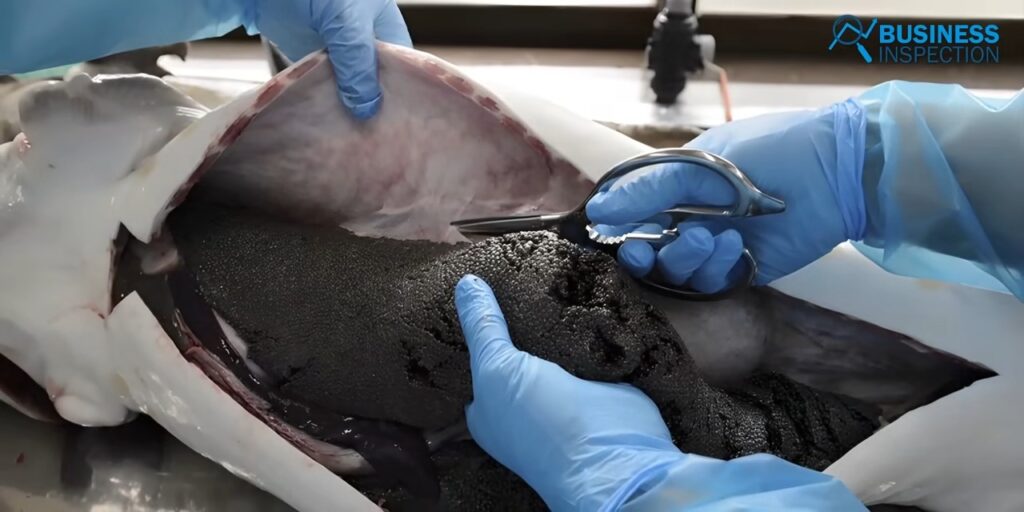
Demand
According to a report by Market Watch, the global caviar market was valued at $356 million in 2019 and will grow at a CAGR of over 8 percent annually to reach $489 million by 2026. Again, according to a report by Global News Wire, the global caviar market will grow at a rate of about 6 percent by 2030 and exceed $512 million. But, there are not enough farms to produce the caviar needed for this increased demand. In 2017, there were slightly more than 2,300 (2,329) caviar farms worldwide, of which 54 percent were in China. People seem less interested in sturgeon farming as sturgeon fishing and harvesting require a long time and investment. Again, it is not possible to increase the supply of caviar without cultivation. This is because there is a ban in many countries of the world on catching wild sturgeon and importing caviar made from that sturgeon. As a result, while the demand for caviar increases every year, it is not possible to increase production. And the lack of sufficient supply compared to demand is another reason why caviar is so expensive.

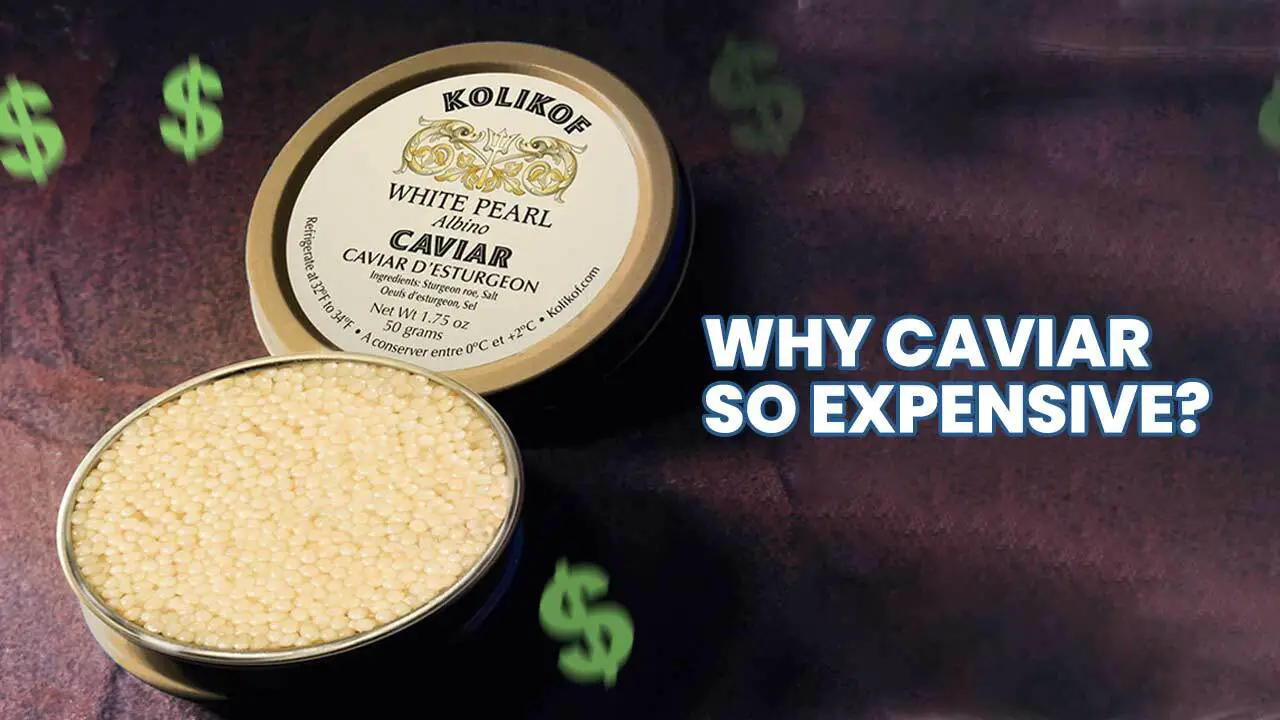








Leave a Comment